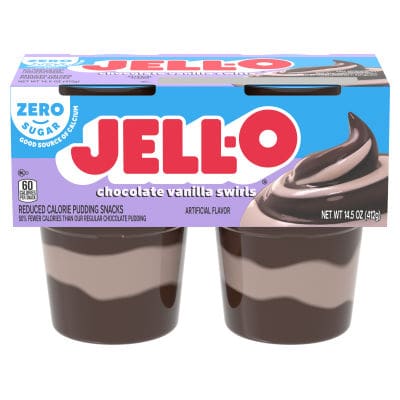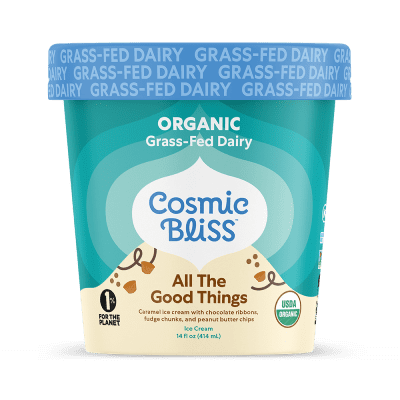Amid an unsteady economy, there have been concerns that consumers will reduce their spending on indulgences, yet the dessert industry remains stable in growth. Nevertheless, Americans are changing their dessert consumption behaviors.
In this article, we’ll explore how consumers are contending with healthy versus indulgent dessert perceptions, the influence of plant-based innovation in sweet treats, demographic variations in attitudes, and look at the frozen dessert industry’s performance.
Is your brand prepared for the current and future dessert industry trends?
Healthy Dessert Trends — Has Indulgence Melted Away?
Indulgence is alive and well for many. This is made clear by Mintel’s dessert industry market data, which reveals that only 39% of US consumers are restrictive in the foods they eat. However, those who restrict their diet more indicate that sugar is a primary concern and as a result, monitor their sugar intake. Treats are also the first to vacate the shopping cart when consumers need to save money on groceries. Despite these challenges, there are many opportunities for the dessert industry to proactively engage with consumers.
In light of global events facing consumers, stress levels are rising. Americans are looking for moments of peace. And while desserts may not resolve complex issues, consumers rate indulgent food as “good for the soul” more than any other attributes. Brands, then, may make a move toward positioning desserts as a necessary pleasure, for moments of affordable enjoyment—rather than pure indulgence.
Brands are already successfully addressing consumer concerns around sugar with product innovations. One example comes from Kraft Heinz, with their “Zero Sugar” JELL-O swirls released in September 2023. This dessert significantly outperforms its subcategory in Mintel’s panel survey, with 61% indicating purchase intent (Source: Mintel GNPD).

With mounting concerns around sugar intake, consumers in the United States are also considering BFY (better-for-you) options up and down the aisles, with plant-based dessert innovations regularly popping up in front of customers. Read on to learn more about why brands need to be nuanced in their plant-based or BFY dessert launches.
BFY and Plant-based Dessert Innovations Explored
As consumers negotiate between indulgence and health, plant-based and BFY dessert options seem to be multiplying. With a broad selection available, it would seem that consumers can combine their need for moments of indulgence with the healthy appeal of plant-based. On the contrary, it’s been challenging for brands to meet both expectations.
Looking at ice cream innovation, we can see that while moving in a positive direction, brands in plant-based desserts have struggled to provide the same creamy richness as dairy-based. Leading brand Wildgood’s “Wildly Creamy” plant-based ice cream appears to satisfy in light of this. Yet, only three in 10 US adults want non-dairy varieties to be just as indulgent as dairy. There’s room then to appeal to consumers’ willingness to compromise on indulgent qualities for claims and offerings of health and BFY.
Consumers are also increasingly looking for sustainability claims, as consumer demand for sustainability in food and drink grows. Cookie products with “environmentally friendly” claims have significantly increased in launches over the past five years. Once again, sustainability is back on the agenda. Brands can remove the guilt associated with dessert eating by leaning toward sustainability, providing consumers with responsible indulgence.
When it comes to plant-based and BFY dessert innovation, a nuanced approach is essential. As consumer preferences vary, brands should focus on targeting their audience based on their specific needs. There’s no one-size-fits-all solution, which is why demographic targeting plays an important role in capturing consumer engagement.
Visit Mintel US Store
Demographic Differences in Dessert Preferences
Younger generations are more likely to reach beyond the traditional formats and flavors within the dessert industry. For example, Gen Z and Millennials outpace Gen X and Baby Boomers for a preference for unique creations in the cookie market. Narrowing down further, Gen Z shows the most promise for edible cookie dough. Gen Z’s adventurous, sense-driven palates point toward the potential for targeted dessert innovation.
Looking broader at food and drink, younger consumers show more excitement around international, limited-edition, and social-media-inspired flavors. In this sense, following dessert trends essentially means following demographic trends. Super-innovative flavor profiles remain niche, but younger consumers who are active on social media are more prone to targeting. As the desire to “go viral” continues, hyper-trendy flavors are key to engaging with others on social media. Rising social media engagement sheds light on changing dessert consumption behaviors here, and signals for brands to change with the times.
Despite perceptions of being the most health conscious, women, especially younger women, are the most pro-indulgence when it comes to desserts and baking. 35% of women aged 18-34 like extra-indulgent options when browsing the baked-goods aisle, more than any other demographic. Similarly, 55% of women, versus 45% of men want to feel like they’re indulging when treating themselves to desserts.
The Latest Scoop on the Frozen Dessert Industry
Mintel’s 2023 ice cream report reveals that frozen treats/desserts are nearly universally consumed, with 94% of US adults buying them. Below, we reveal some of the key developments.
- Despite being less popular overall, sherbet and sorbet have seen the largest growth in participation and sales, owing to the conceptual expansion into indulgence and excitement.
- Half of ice cream category participants show an interest in ice cream shop-inspired flavors, as Americans see ice cream parlor desserts as more “high quality” when compared to retail.
- Frozen novelties overtook ice cream’s market share dominance, indicating people are buying more and/or spending more on frozen novelties (handheld frozen desserts such as ice cream bars, popsicles, and cones).
Despite ice cream launches seeing an increase in ethical and sustainable claims, consumers in 2023 are still focused on the key characteristics of taste and convenience. This leaves brands in a challenging position when weighing up the ingredients of their marketing efforts. Some brands are leaning into the sustainable side, such as Cosmic Bliss with their grass-fed dairy ice cream that claims sustainably sourced ingredients. While others seek to fulfill consumers’ drive for indulgence. Häagen-Dazs Butter Cookie Chocolate Ice Cream Cone is one example, rated “tasty” by 86% of consumers (Source: Mintel GNPD).

Moving Forward in the US Dessert Industry
As we’ve seen, desserts are not a one-size-fits-all category. Appealing to consumers means understanding their preferences. As a brand, are you catering to the needs of your customer base? Are you following dessert industry trends to make a connection with your consumer?
Browse our dessert market research reports to identify the latest industry and market data across the US dessert market. You can also sign up for Spotlight, our free newsletter for exclusive insights, by hitting the button below.
Sign up for Spotlight








